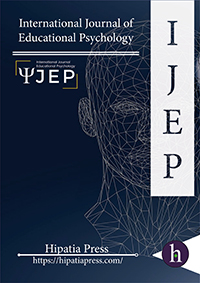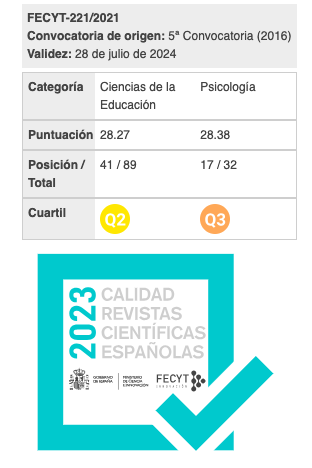An International Comparison Study Exploring the Influential Variables Affecting Students’ Reading Literacy and Life Satisfaction
Keywords:
Downloads
Number of words in the article:
7,996Abstract
The Program for International Student Assessment (PISA) aims to provide comparative data on 15-year-olds’ academic performance and well-being. The purpose of the current study is to explore and compare the variables that predict the reading literacy and life satisfaction of U.S. and South Korean students. The random forest algorithm, which is a machine learning approach, was applied to PISA 2018 data (4,677 U.S. students and 6,650 South Korean students) to explore and select the key variables among 305 variables that predict reading literacy and life satisfaction. In each random forest analysis, one for the U.S. and another for South Korea, 23 variables were derived as key variables in students’ reading literacy. In addition, 23 variables in the U.S. and 26 variables in South Korea were derived as important variables for students’ life satisfaction. The multilevel analysis revealed that various student-, teacher- or school-related key variables derived from the random forest were statistically related to either U.S. and/or South Korean students’ reading literacy and/or life satisfaction. The current study proposes to use a machine learning approach to examine international large-scale data for an international comparison. The implications of the current study and suggestions for future research are discussed.
Downloads
References
Barrett, N., & Toma, E. F. (2013). Reward or punishment? Class size and teacher quality. Economics of Education Review, 35, 41–52. https://doi.org/10.1016/j.econedurev.2013.03.001
Google Scholar CrossrefBreiman, L. (2001). Random forests. Machine Learning, 45(1), 5–32. https://doi.org/10.1023/A:1010933404324
Google Scholar CrossrefBreiman, L., Cutler, A., Liaw, A., & Wiener, M. (2018). The randomForest package. R Core Team. Retrieved from: https://CRAN.R-project.org/package=randomForest
Google Scholar CrossrefChen, R. C., Dewi, C., Huang, S. W., & Caraka, R. E. (2020). Selecting critical features for data classification based on machine learning methods. Journal of Big Data, 7(1), 1-26. https://doi.org/10.1186/s40537-020-00327-4
Google Scholar CrossrefCho, E. Y. N. (2019). A multilevel analysis of life satisfaction among secondary school students: Do school-level factors matter?. Children and Youth Services Review, 102, 231–242. https://doi.org/10.1016/j.childyouth.2019.05.002
Google Scholar CrossrefClaro, S., Paunesku, D., & Dweck, C. S. (2016). Growth mindset tempers the effects of poverty on academic achievement. Proceedings of the National Academy of Sciences, 113(31), 8664–8668. https://doi.org/10.1073/pnas.1608207113
Google Scholar CrossrefDewi, C., & Chen, R. C. (2019). Random forest and support vector machine on features selection for regression analysis. International Journal of Innovative Computing, Information and Control, 15(6), 2027–2037. https://doi.org/10.24507/ijicic.15.06.2027
Google Scholar CrossrefDong, X., & Hu, J. (2019). An exploration of impact factors influencing students’ reading literacy in Singapore with machine learning approaches. International Journal of English Linguistics, 9(5), 52–65. https://doi.org/10.5539/ijel.v9n5p52
Google Scholar CrossrefElliot, A. J., Chirkov, V. I., Kim, Y., & Sheldon, K. M. (2001). A cross-cultural analysis of avoidance (relative to approach) personal goals. Psychological Science, 12(6), 505–510. https://doi.org/10.1111/1467-9280.00393
Google Scholar CrossrefErtem, H. Y. (2020). Examination of Turkey’s PISA 2018 reading literacy scores within student-level and school-level variables. Participatory Educational Research, 8(1), 248–264. https://doi.org/10.17275/per.21.14.8.1
Google Scholar CrossrefFuchs, T., & Wößmann, L. (2007). What accounts for international differences in student performance? A re-examination using PISA data. Empirical Economics, 32(2–3), 433–464. https://doi.org/10.1007/s00181-006-0087-0
Google Scholar CrossrefGamazo, A., & Martínez-Abad, F. (2020). An exploration of factors linked to academic performance in PISA 2018 through data mining techniques. Frontiers in Psychology, 11(–), 1–17. https://doi.org/10.3389/fpsyg.2020.575167
Google Scholar CrossrefGilman, R. (2001). The relationship between life satisfaction, social interest, and frequency of extracurricular activities among adolescent students. Journal of Youth and Adolescence, 30(6), 749–767. https://doi.org/10.1023/a:1012285729701
Google Scholar CrossrefGuess, P. E., & McCane-Bowling, S. J. (2016). Teacher support and life satisfaction: an investigation with urban, middle school students. Education and Urban Society, 48(1), 30–47. https://doi.org/10.1177/0013124513514604
Google Scholar CrossrefHu, X., Gong, Y., Lai, C., & Leung, F. K. (2018). The relationship between ICT and student literacy in mathematics, reading, and science across 44 countries: A multilevel analysis. Computers & Education, 125(1), 1–13. https://doi.org/10.1016/j.compedu.2018.05.021
Google Scholar CrossrefKang, D. J., & Yum, S. C. (2013). An analysis of school effects based on reading achievement data from PISA 2009. Journal of Research in Curriculum Instruction. 17(2), 323–345. https://doi.org/10.24231/rici.2013.17.2.323
Google Scholar CrossrefKaplan, A., & Maehr, M. L. (1999). Achievement goals and student well-being. Contemporary Educational Psychology, 24(4), 330–358. https://doi.org/10.1006/ceps.1999.0993
Google Scholar CrossrefKardefelt‐Winther, D., Rees, G., & Livingstone, S. (2020). Contextualizing the link between adolescents’ use of digital technology and their mental health: a multi‐country study of time spent online and life satisfaction. Journal of Child Psychology and Psychiatry, 61(8), 875–889. https://doi.org/10.1111/jcpp.13280
Google Scholar CrossrefKim, H. S. (2012). The impact of ICT use on students' academic performance based on PISA 2009 Korean data. Asian Journal of Education, 13(1), 1–22. https://doi.org/10.15753/aje.2012.13.1.001
Google Scholar CrossrefKoyuncu, I. & Fırat, A. (2020). Investigating reading literacy in PISA 2018 assessment. International Electronic Journal of Elementary Education, 13(2), 263–275. https://doi.org/10.26822/iejee.2021.189
Google Scholar CrossrefLee, I. W., & Ku, N. W. (2019). Analysis of PISA 2015 reading achievement characteristics of Korean students and influence of educational context variables. Journal of Reading Research, 50, 113–144. %20https:/doi.org/10.17095/JRR.2019.50.4
Google Scholar CrossrefLim, H. J., & Jung, H. (2019). Factors related to digital reading achievement: A multilevel analysis using international large scale data. Computers & Education, 133, 82–93. https://doi.org/10.1016/j.compedu.2019.01.007
Google Scholar CrossrefLiu, Z., & Chen, H. (2017). A predictive performance comparison of machine learning models for judicial cases. In 2017 IEEE Symposium Series on Computational Intelligence (SSCI), 1-6. https://doi.org/10.1109/SSCI.2017.8285436
Google Scholar CrossrefMuthén, L. K., & Muthén, B. O. (1998–2019). Mplus user’s guide (8th ed.). Los Angeles, CA: Muthén & Muthén.
Google Scholar CrossrefNakhla, G. (2019). The relationship between fear of failure, academic motivation and student engagement in higher education: A general linear model (Unpublished doctoral dissertation). United Kingdom, Lancaster: Lancaster University.
Google Scholar CrossrefOECD. (2019a). PISA 2018 technical report. OECD Publishing.
Google Scholar CrossrefOECD. (2019b), PISA 2018 results (Volume I) what students know and can do. OECD Publishing.
Google Scholar CrossrefOECD. (2019c). PISA 2018 results (Volume III) what school life means for students' lives. OECD Publishing.
Google Scholar CrossrefPark, S. Y., & Chung, H. W. (2020). Classifying latent profiles in academic achievement and life satisfaction of adolescents. The Journal of Yeolin Education, 28(3), 47–72. https://doi.org/10.18230/tjye.2020.28.3.47
Google Scholar CrossrefPark, N., & Huebner, E. S. (2005). A cross-cultural study of the levels and correlates of life satisfaction among adolescents. Journal of Cross-Cultural Psychology, 36(4), 444-456. https://doi.org/10.1177/0022022105275961
Google Scholar CrossrefPerry, L. B., & McConney, A. (2010). Does the SES of the school matter? An examination of socioeconomic status and student achievement using PISA 2003. Teachers College Record, 112(4), 1137–1162. https://doi.org/10.1177/016146811011200401
Google Scholar CrossrefRaudenbush, S.W., & Bryk, A.S. (2002). Hierarchical linear models (2nd ed.). Newbury Park, CA: Sage.
Google Scholar CrossrefReilly, D. (2012). Gender, culture, and sex-typed cognitive abilities. PLoS ONE, 7(7), 1–16. https://doi.org/10.1371/journal.pone.0039904.
Google Scholar CrossrefRudolf, R. (2020). Life satisfaction among middle school students around the world cross-cultural evidence from PISA 2018. Retrieved April 28, 2021, from https://ssrn.com/abstract=3544001
Google Scholar CrossrefShin, J., Lee, H., & Kim, Y. (2009). Student and school factors affecting mathematics achievement: International comparisons between Korea, Japan and the USA. School Psychology International, 30(5), 520–537. https://doi.org/10.1177/0143034309107070
Google Scholar CrossrefShin, S. H., Slater, C. L., & Backhoff, E. (2013). Principal perceptions and student achievement in reading in Korea, Mexico, and the United States. Educational Administration Quarterly, 49(3), 489–527. https://doi.org/10.1177/0013161X12458796
Google Scholar CrossrefSothe, C., De Almeida, C. M., Schimalski, M. B., La Rosa, L. E. C., Castro, J. D. B., Feitosa, R. Q., ... & Tommaselli, A. M. G. (2020). Comparative Performance of Convolutional Neural Network, Weighted and Conventional Support Vector Machine and Random Forest for Classifying Tree Species Using Hyperspectral and Photogrammetric Data. GIScience & Remote Sensing, 57(3), 369-394. https://doi.org/10.1080/15481603.2020.1712102
Google Scholar CrossrefTang, Y. (2019). Immigration status and adolescent life satisfaction: an international comparative analysis based on PISA 2015. Journal of Happiness Studies, 20(5), 1499–1518. https://doi.org/10.1007/s10902-018-0010-3
Google Scholar CrossrefTopçu, M. S., Arıkan, S., & Erbilgin, E. (2015). Turkish students’ science performance and related factors in PISA 2006 and 2009. The Australian Educational Researcher, 42(1), 117–132. https://doi.org/10.1007/s13384-014-0157-9
Google Scholar CrossrefWon, S. J., & Han, S. (2010). Out-of-school activities and achievement among middle school students in the U.S. and South Korea. Journal of Advanced Academics, 21(4), 628–661. https://doi.org/10.1177/1932202X1002100404
Google Scholar Crossrefvan Buuren, S., & Groothuis-Oudshoorn, K. (2011). mice: Multivariate imputation by chained equations in R. Journal of Statistical Software, 45(3), 1–68. https://doi.org/10.18637/jss.v045.i03
Google Scholar CrossrefYoon, J., & Järvinen, T. (2016). Are model PISA pupils happy at school? Quality of school life of adolescents in Finland and Korea. Comparative Education, 52(4), 427–448. https://doi.org/10.1080/03050068.2016.1220128
Google Scholar CrossrefXiao, Y., & Hu, J. (2019). Regression analysis of ICT impact factors on early adolescents’ reading proficiency in five high-performing countries. Frontiers in Psychology, 10(–), 1–14. https://doi.org/10.3389/fpsyg.2019.01646
Google Scholar CrossrefDownloads
Published
Almetric
Dimensions
How to Cite
Issue
Section
License
Copyright (c) 2022 Hyewon Chung, Jung-In Kim, Eunjin (EJ) Jung, Soyoung Park

This work is licensed under a Creative Commons Attribution 4.0 International License.
All articles are published under Creative Commons copyright (CC BY). Authors hold the copyright and retain publishing rights without restrictions, but authors allow anyone to download, reuse, reprint, modify, distribute, and/or copy articles as the original source is cited.
















